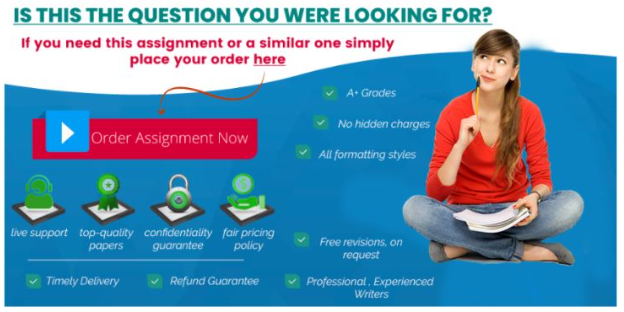Leadership Goals
In Module 1, you began the process of developing a Leadership Growth Plan (LGP) with a thorough self-assessment. In Module 2, you established your vision, identified obstacles to achieving that vision, and made plans to overcome the obstacles. In this module, you will continue to develop your LGP by setting goals and conducting an assessment of resources you will need to accomplish your goals. The outcome of this exercise is a 2- to 3-page plan that specifies 3 to 4 goals you would like to accomplish in the next year and sets clear objectives for what you will need to do to achieve them.
Keys to the Assignment
Perhaps the hardest part of setting goals is getting started. Begin by considering the following:
1. Ask yourself: “What do I need to be doing in order to achieve my vision?” Think in terms of what you can accomplish by next year. These are the milestones that describe your goals. They define what you intend to do.

2. Next, look at each goal separately and ask yourself:
· “What do I need to do to reach this goal?”
· “What skills do I need to acquire?”
· “What new knowledge do I need?”
The answers to these three questions constitute your objectives.
Objectives are shorter term than goals and specify what you need, when you need it, and how you are going to get it. While goal statements are helpful in that they set a direction, objectives provide the “roadmap” that will get you to your vision. Objectives tell you exactly what you need to do, how you need to do it, and provide a timeline.
Strong objectives meet the following criteria:
· They are specific. When you write your objectives, use action words that have a tangible outcome such as identify, demonstrate, perform, or calculate. You will be able to assess when you have met these types of objectives. Avoid words like understand, appreciate, know, or learn. These terms are too vague. How will you be able to assess whether or not you “understand”?
· They are challenging. Difficult, but attainable objectives will help you cultivate a greater leadership capacity. If an objective is too easy, you will not grow. If it is too difficult, you may end up frustrated and the goal will be unfulfilled.
Your goals and objectives form the outline of your development plan. To flesh it out, determine what actions are required to meet your objectives. These actions usually make up the greater part of the leadership development plan itself.
Putting it all together and writing up the plan
· Fortunately, there are a lot of templates on the internet to help you create an action plan. Begin by doing some research and select a template that will allow you to present your goals, objectives, and timeline. You will also need to identify the resources you will need. Most of these templates are some type of table, and it is easy to follow what will need to be done, by when.
· The critical component of this assignment is to be specific about what actions you will take to gather the resources you will need to meet your goals. The following list gives a number of specific actions you can include in your plan, but you should not stop with these. Use your own initiative and creativity to come up with additional formal, informal, directed, and self-directed actions you can take to meet your Leadership Growth Plan.
· Reading – This is the basic and most fundamental way to stay current in your area of expertise, gain new knowledge, and be inspired. Your plan should include regular reading of professional journals, trade publications, books, and reputable online resources.
· Training programs and courses – Formal courses and training seminars can be effective and efficient ways of learning new skills and expanding your leadership capacities. Many companies offer such training opportunities, but also check independent or consulting firms in specific areas such as motivation, performance appraisal, cross-cultural communication, or mentoring. Check out the internet, but also local colleges and universities. Certificates can offer cost- and time-effective ways to home in on developing specific skills such as human resources or project management.
· On the job – even if your current position does not involve leadership responsibilities, you can look for ways to learn leadership through practical experience by mentoring a younger or newer employee, chairing a task force, preparing a presentation, or simply working to develop your active listening skills on a daily basis.
· Volunteering – Join a civic group, charity, board of a non-profit, political campaign, fundraising effort, or other community service. Be the first to offer to take on a new project or supervise other volunteers. Represent the group on radio, TV, or press as the spokesperson.
· Find a mentor – identify someone who has what you want and ask if they will show you the ropes. Let them know that you want to develop specific skills, such as public speaking or organizing events and would be interested in being a helping hand to learn these skills. Ask for feedback from supervisors and let them know you would welcome leadership opportunities.
· Journaling – often overlooked, a habit of writing about problems, learnings, obstacles encountered and overcome, and even hopes and dreams of the future can help set direction and increase motivation. A journal can document what you are learning and how it can apply to your leadership development.
SLP Assignment Expectations
· Include a cover page and reference page in addition to the 2-3 pages of analysis described above. Remember that when an assignment calls for 2 -3 pages, the assignment was created to result in a paper 3 pages in length; however, your professor may accept a paper that is at least 2 full pages.
· Your paper must have an introduction and a conclusion.
· Use headings to indicate major sections of the report (this is the “organization” part of the grading rubric).
· Cite and reference all sources used to complete this assignment. Your reference list must contain at least 3 high quality peer-reviewed references from the Trident Online Library.
· Use APA formatting according to the 7th edition.
· Proofread and edit your papers carefully. The expectation is zero errors.The best tool to do this is the Editor tool found in MS Word toolbar at the top of the page.
CHECKLIST FOR SECTIONS
| LED514 Module 3 Session Long Project Checklist (Rev.12-14-22) |
| INSTRUCTIONS FOR STUDENT: After you complete your references section in your assignment, copy and paste this grading rubric to your Word document and use it as a checklist to help make sure you covered all the required content, structure, and mechanical expectations. |
| Content (Student should structure the paper into sections below.)
Student should use mark the box below as a checklist. |
Student Notes |
| Section 1- Introduction ( Use this header): describes what the memo is going to be about; it mentions the upcoming sections. |
|
|
| Section 2- Goal 1 of 3( Use this header): Answer these questions:
· What is the goal?
· Why is it important?
· How does the goal connect to your personal values?
· How do you measure you achieved it?
· What is the timeline for this goal?
· How will you hold yourself accountable for finishing the goal?
· What resources do you need?
· What specific steps/actions do you need to take to complete the goal? |
|
|
| Section 3- Goal 3 of 3 ( Use this header): Answer these questions:
· What is the goal?
· Why is it important?
· How does the goal connect to your personal values?
· How do you measure you achieved it?
· What is the timeline for this goal?
· How will you hold yourself accountable for finishing the goal?
· What resources do you need?
· What specific steps/actions do you need to take to complete the goal? |
|
|
| Section 4- Goal 3 of 3 ( Use this header): Answer these questions:
· What is the goal?
· Why is it important?
· How does the goal connect to your personal values?
· How do you measure you achieved it?
· What is the timeline for this goal?
· How will you hold yourself accountable for finishing the goal?
· What resources do you need?
· What specific steps/actions do you need to take to complete the goal? |
|
|
| Section 5- References ( Use this header): has 3 peer-reviewed/scholarly references from the databases within the CyberLibrary. The references are also integrated within the paper. |
|
|
| Section 6- Grading Rubric ( Use this header): contains this grading rubric. |
|
|
| Organization / Development
Student should use mark the box below as a checklist. |
Student Notes |
| The 6 required sections are organized separately in sequence as listed in the Content section. |
|
|
| The memo is at least 2 full pages in length (excluding references and headers) size 12 Times New Roman font with double spacing text. |
|
|
| Each section is labelled with the header prescribed above. |
|
|
| Mechanics
Student should use mark the box below as a checklist. |
Student Notes |
| Formatting or layout and graphics are pleasing to the eye (font, colors, spacing). |
|
|
| Rules of grammar, word usage, punctuation, capitalization, and spelling are followed. |
|
|
| Sentences are complete, clear, varied, and concise with proper syntax. |
|
|
| Used size 12 Times New Roman font for main body text and References. |
|
|
| Used double spacing between sentences and in References section. |
-
What do I need to be doing in order to achieve my vision?,
-
What do I need to do to reach this goal?,
-
What skills do I need to acquire?,
-
What new knowledge do I need?,
-
How will you be able to assess whether or not you “understand”? (asked in context of writing objectives)







